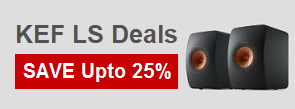Features
| Warranty length | 2 Years |
|---|---|
| Brand | Technics |
Tech Specs
- Accurate Digital Technology
- JENO Engine (Jitter Elimination and Noise-shaping Optimisation)
- LAPC (Load Adaptive Phase Calibration)
- Advanced Speed Silent Power Supply
- Battery Driven Clock Generator
- Noiseless Signal Technology
- Advancement of Power Supply
- Technics Definitive Design
- High-rigidity Cabinet
- Three-section Configuration
- FTC Output Power: 150W + 150W ( 1kHz, T.H.D. 0.5 %, 8Ω, 20kHz LPF ), 300W + 300W ( 1kHz, T.H.D. 0.5 %, 4Ω, 20kHz LPF)
- Input Sensitivity / Input Impedance: LINE 200 mV / 22 kΩ, PHONO (MM) 2.5 mV / 47 kΩ, PHONO(MC) 300uV /100Ω
- Frequency Response
- LINE 5 Hz-80 kHz (-3 dB, 8 Ω),
- PHONO (MM) 20 Hz - 20 kHz (RIAA DEVIATION ±1 dB, 8 Ω)
- DIGITAL 5 Hz - 80 kHz (-3 dB, 8 Ω)
- Load Impedance: 4 Ω-16 Ω
- Analogue Input Terminal: LINE x 2 (LINE 1, LINE2), LINE XLR BALANCED x1, PHONO (MM/MC) x1, PHONO XLR BALANCED(MC) x1, MAIN IN x1, REC IN x1
- Digital Input Terminal: Optical digital x2 (OPT 1, OPT 2) , Coaxial digital x2(COAX 1, COAX 2), USB-B x2 (PC 1, PC 2)
- Analogue Output Terminal: PRE OUTx1, REC OUT x1
- Headphone Output: Yes, Stereo Φ6.3mm
- Support Codec
- USB 2.0 high-speed, USB Audio Class 2.0, Asynchronous mode
- PCM: Yes (32, 44.1, 48, 88.2, 96, 176.4, 192, 352.8, 384 kHz / 16, 24, 32 bit)
- DSD: Yes (2.8 MHz, 5.6 MHz, 11.2 MHz, 22.4 MHz* *ASIO Native mode only)
- Power Supply: AC 220-240 V, 50 Hz / 60 Hz
- Power Consumption: 220 W
- Dimensions (W x H x D): 430 mm × 191 mm × 459 mm
- Weight: Approx. 22.8 kg
Included in the box
- Amplifier
- Remote Control
- Calibration Record
- AC Cord
- Owner's Manual
Product Description
Technics SU-R1000 integrated amplifier is excellent value and features a range of high end features, including balanced inputs. The class D amplifier has an output of 150 Watts per channel, into 8 Ohms – more than enough to drive most speakers.
The specially designed switching power supply has a fixed frequency to eliminate noise. No less than four independent power supplies are used to ensure the best performance. Additionally, many noise mitigation technologies are used, such as input filters on USB inputs. Connectivity is good with two sets of speaker outputs as well as a range of digital and analogue inputs.
Active distortion cancelling technology
An amplifier needs to be able to drive a wide range of speakers without distortion. The SU-R1000 does this by monitoring the signal at the speaker terminals and comparing it with the pure signal coming from the JENO engine. The speakers voice coil generates voltage drops and a back EMF (voltage). The active distortion cancelling circuit uses the measured difference, to correct the output of the Class D amplifier, removing any distortion. The result should be great sound quality no matter what speakers are used.
Advanced power supply
For efficiency the SU-R1000 uses a switch-mode power supply. These are normally regulated by changing the frequency, or ‘on’ time, of the switching pulses. However, this can generate modulation noise. Consequently, the noise can affect the sound quality. As a result, the advanced power supply in the SU-R1000 locks the switching frequency at 400kHz. This is designed to eliminate the noise, however, the regulation accuracy is impaired. To mitigate this a super low noise regulator is used, in the next stage. This creates a fast responding power supply, with little noise.
Four power supply units
The SU-R1000 has four independent power supplies. These feed the high and low signal areas separately. This should reduce crosstalk and gives a good signal-to-noise ratio. For example both channels of the power output stage have their own power unit. Additionally, the digital and analogue sections have their own power supply. Also – as phono preamps are particularly susceptible to noise pickup due to their high gain, this section also has its own power supply.
Discrete input circuits
The analogue input circuits of the SU-R1000, use discrete components to give a symmetrical output. These are meticulously tuned to prevent crosstalk between channels. Moreover, the phono input section and analogue inputs all use balanced circuit topology for minimum noise. Additionally, the USB input has a high quality ruby mica capacitor and carbon resistor on the input. This has the effect of blocking any noise from a PC. The analogue to digital converter uses a high-performance chip, made by Asahi Kasei Microdevices (AKM) for high-precision A/D conversion. As a result, the amplifier should provide outstanding sound quality.
Rigid chassis construction
The SU-R1000 features a vibration-reducing, double deck construction. This suppresses vibration and any source of noise. The upper deck holds the power amp section, including the amplifier modules and power supply. The lower deck houses the preamp sections, both analogue and digital, along with their power supplies. That includes the phono preamp. Moreover, each section is separated by steel shield plates. The case is made of thick aluminium plates while the front panel is 10mm thick. Moreover, the insulators that support the chassis are made of cast iron. This provides a very rigid construction.
Good connectivity
Connectivity is good with two RCA line level inputs. There are also balanced XLR inputs for both line inputs as well as the phono input. The built-in DAC can be accessed via optical as well as coaxial digital inputs. There is a record, as well as a pre out, for a subwoofer or preamp. Unusually, there are outputs for two sets of speakers. Finally, there is a trigger output for remote control.











































































